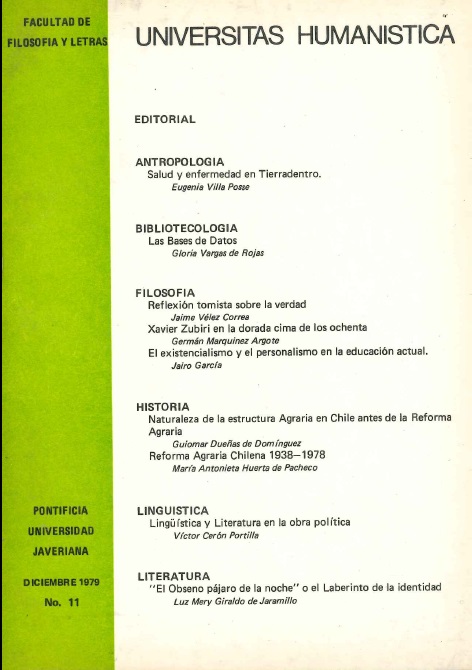Abstract
El proceso de Reforma Agraria en Chile es bastante peculiar en su evolución histórica, comprendida entre los gobiernos del Frente Popular, a partir de 1938, y el actual gobierno de la Junta Militar.
La Reforma Agraria se ha desarrollado impulsada por diferentes motivaciones, contando con diversos enfoques políticos y profundidad en los cambios planteados.
La primera proposición de Reforma Agraria a nivel gubernamental, se presenta con el inicio de los gobiernos del Frente Popular en 1938. Es una de sus principales banderas de lucha, y corresponde al impulso de la industrialización por efectos de la crisis de 1930. Sin embargo, bajo esta coalición política no se realizó ningún cambio importante en el agro. Luego, en 1962 con el gobierno de Jorge Alessandri, vuelve a elaborarse una ley de Reforma Agraria como consecuencia de la exigencia planteada por la Alianza para el Progreso a este respecto, aunque la ley plantea posibilidades de cambio importantes, estos no se realizan. En 1964 vuelve a señalarse la Reforma Agraria como uno de los objetivos centrales del gobierno de Eduardo Frei, quien en principio utiliza la ley de Alessandri para iniciar el proceso y juego lo continua con su ley de 1967. Este es el momento donde realmente podemos encontrar el primer proceso de Reforma Agraria, motivado también por la Alianza para el Progreso y la aceleración del desarrollo económico y social, bajo un concepto de capitalismo con sentido comunitario.

This journal provides immediate open access to its content on the principle that making research freely available to the public, encourages greater global exchange of knowledge.
The journal Universitas Humanística is registered under a Creative Commons Attribution 4.0 International Public License. Thus, this work may be reproduced, distributed, and publicly shared in digital format, as long as the names of the authors and Pontificia Universidad Javeriana are acknowledged. Others are allowed to quote, adapt, transform, auto-archive, republish, and create based on this material, for any purpose (even commercial ones), provided the authorship is duly acknowledged, a link to the original work is provided, and it is specified if changes have been made. Pontificia Universidad Javeriana does not hold the rights of published works and the authors are solely responsible for the contents of their works; they keep the moral, intellectual, privacy, and publicity rights.
Approving the intervention of the work (review, copy-editing, translation, layout) and the following outreach, are granted through an use license and not through an assignment of rights. This means the journal and Pontificia Universidad Javeriana cannot be held responsible for any ethical malpractice by the authors. As a consequence of the protection granted by the use license, the journal is not required to publish recantations or modify information already published, unless the errata stems from the editorial management process. Publishing contents in this journal does not generate royalties for contributors.


